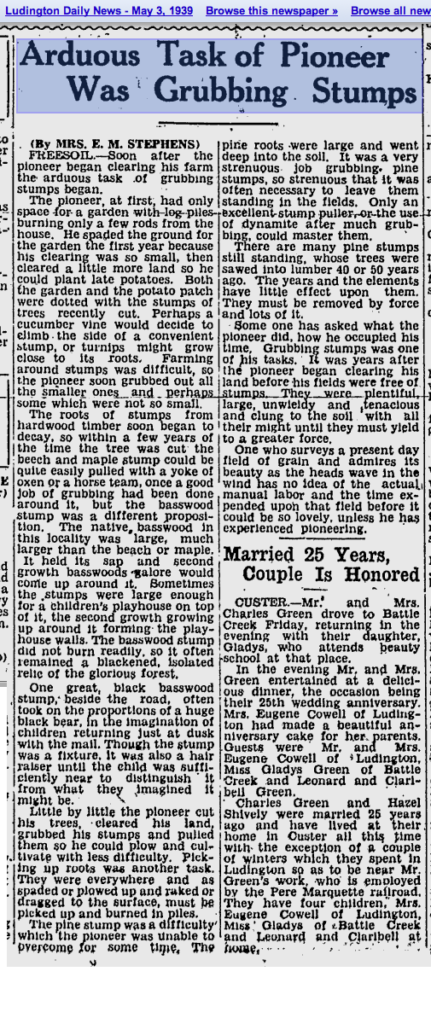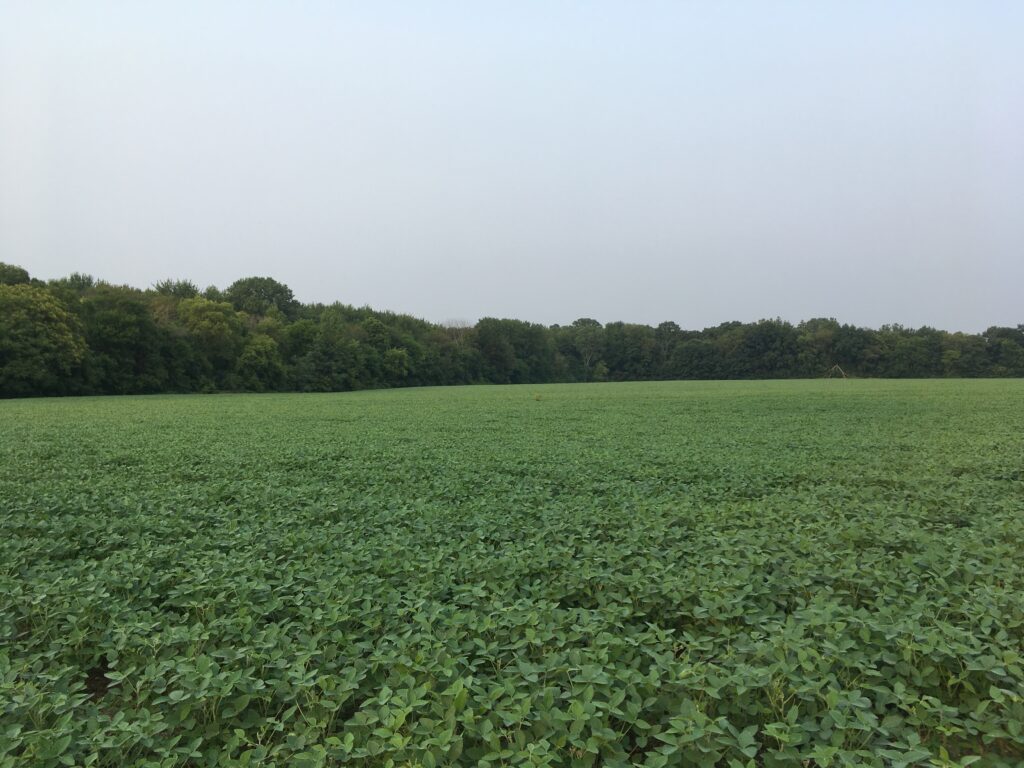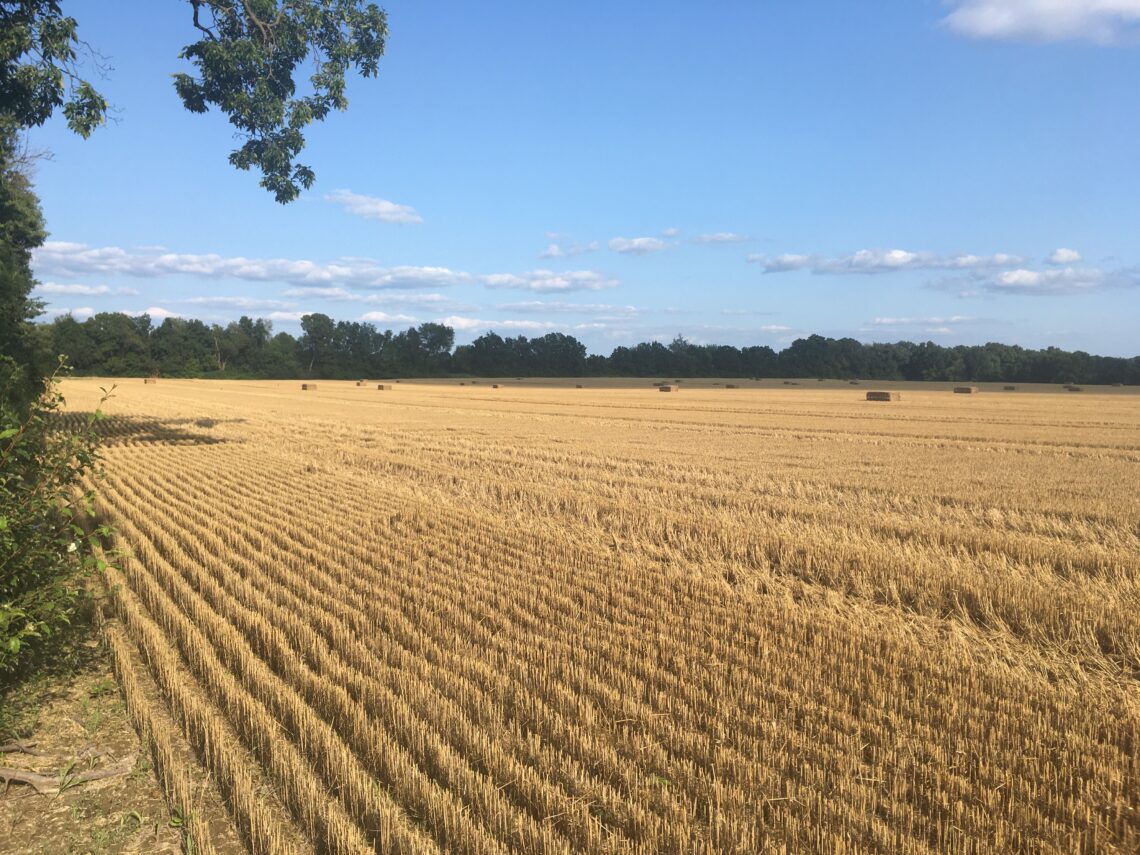“Some one has asked what the pioneer did, how he occupied his time. Grubbing stumps was one of his tasks.”
– Mrs. E.M. Stephens
At one time, I was a fledgling hop farmer. The Common Hop, Humulus lupulus, is a vine that bears green conical flowers, whose primary human use is to flavor and preserve beer – in particular, craft beer. In 2012, having recently bought a fallow farm that was ripe for an agricultural project of some sort, I decided to take a cue from my love of brewing and drinking. As part of my ongoing vendetta against invasive shrubs, I cleared a likely 1/4 acre plot of invasive Autumn olive and Himalayan blackberry, and went about installing a hop yard.
I was not entirely practical about this venture. First, I resisted the use of treated wood for the posts that held up the trellises. Second, I planted far too many vines for someone without a brewery supply contract or any intention of pursuing one. Needless to say, these decisions were not optimal. Within a few years, I discovered that not only was the maintenance of so many hop vines impossible for a person with a day job, but also that untreated posts will only stand up for a couple of years, even when the base is coated with tar, as my grandfather would have done.
Old school
My other throwback idea was to disregard today’s commercial practice of growing hops on tall, inaccessible trellises that stretch a full 16 feet into the sky. Instead, I chose to follow the teachings of U.S. Patent No. 40,792, issued in 1863. This system of 8 foot trellises was very popular among hop growers at the time, and I was attracted to it because it was far more practical to build than a modern trellis system. However, my belief in this method of trellising turned out to be more idealistic than informed. What I did not understand was that most modern varieties of hops — the varieties that I wanted to grow — have been specifically bred for commercial farming. Commercial hop farmers have long standardized on varieties that grow very tall, because this is the most efficient use of space and sunlight, and because the machinery that harvests them has, in turn, been designed for tall trellises that accommodate such varieties. Thus the varieties that I wanted to grow for my own beer were bred for commercial use, and are thus locked in to a system of tall trellises. Those early farmers using my system in 1863 were successful because they had the benefit of old-fashioned hop varieties that bore their cones much lower on the vine — and I did not.
“Grubbing”
It may be too late to make this long story short, but suffice it to say that trying to resurrect a long-forgotten method of hop farming brought me into contact with many century-old writings on farming techniques. It was there that I first came across the word “grubbing”.
There was much mention of the springtime activity of preparing the hop crowns for growth, by pulling up old weeds, loosening the soil, and performing “grubbing as necessary.” But I could not figure out exactly what “grubbing” was. In the same context, there was prominent mention of the need to remove and kill grubs (the larva of certain beetles) that would be found in the soil. So naturally, I assumed that grubbing meant removing grubs.
However, I was even wrong about that. The dictionary told me that it meant removing the roots of recently felled trees, in order to make a tillable surface suitable for gardening or farming. But this didn’t seem to fit my conception of working in an established hopyard.
In my search for a better understanding of the word as it was used in the 1800s, I came across many more mentions in the context of removing roots from the soil. So, “grubbing as necessary” simply meant removing the roots of things that might have grown near the hop crown.
Learning is forever
Admittedly, my new understanding of the term “grubbing” is knowledge that I may never use again. However, it did lead to the discovery of a charming, long-forgotten article in the Ludington Daily News, dated May 3, 1939. Among its other shortcomings, Google is quite good at finding relatively irrelevant items that seem relevant because the search term is in Big Letters. This article did not help me understand hops, but it did introduce me to the work of a Mrs. E.M. Stephens.
There seems to be no record of exactly who Mrs. E.M. Stephens was, although we can probably assume that she had a husband, Mr. E. M. Stephens, who was progressive enough to allow his wife to be a frequent contributor of short articles for her local newspaper. Here, she has decided to share with us her perspective on that most thankless of tasks, grubbing stumps. (The text is reproduced in a more readable format at the end of this post).

Now, I don’t fully understand what motivated Mrs. Stephens to write this feuilleton about such an obscure topic, but I’m glad that she did. Within it she was able to weave several bucolic references to old time rural life, that were perhaps a bit historical in nature even at the time they were printed. In 1939, certainly there were many alive who could remember the arduous task of creating the open fields we see today.
I have also often thought of the work that went into the clearing of land for agriculture. Although I do understand that much of this activity was slash-and-burn destruction on par with that of the Amazon, and I do support efforts at rewilding unused agricultural fields, I also feel a bit sad to see these carefully groomed features of the landscape lost to invasive shrubs and become home to already overpopulated categories of wildlife such as deer or woodchucks — or, far worse, people who are willing to purchase a new McMansion from a developer who only sees the results of this “arduous task” as a prime investment opportunity.
In these fields I have always seen some of the effort that Mrs. Stephens describes, especially after having experienced a small sample of it while clearing invasives from what became my tiny hopyard.

Arduous Task of Pioneer Was Grubbing Stumps
(By MRS. E. M. STEPHENS)
FREESOIL.– Soon after the pioneer began clearing his farm the arduous task of grubbing stumps began.
The pioneer, at first, had only space for a garden with log piles burning only a few rods from the house. He spaded the ground for the garden the first year because his clearing was so small, then cleared a little more land so he could plant late potatoes. Both the garden and the potato patch were dotted with the stumps of trees recently cut. Perhaps a cucumber vine would decide to climb the side of a convenient stump, or turnips might grow close to its roots. Farming around stumps was difficult, so the pioneer soon grubbed out all the smaller ones and perhaps some which were not so small.
The roots of stumps from hardwood timber soon began to decay, so within a few years of the time the tree was cut the beech and maple stump could be quite easily pulled with a yoke of oxen or a horse team, once a good job of grubbing had been done around it, but the basswood stump was a different proposition. The native basswood in this locality was large, much larger than the beech or maple. It held its sap and second growth basswoods galore would come up around it. Sometimes the stumps were large enough for a children’s playhouse on top of it, the second growth growing up around it forming the playhouse walls. The basswood stump did not burn readily, so it often remained a blackened, isolated relic of the glorious forest.
One great, black basswood stump, beside the road, often took on the proportions of a huge black bear, in the imagination of children returning just as dusk with the mail. Though the stump was a fixture, it was also a hair raiser until the child was sufficiently near to distinguish it from what they imagined it might be.
Little by little the pioneer cut his trees, cleared his land, grubbed his stumps and pulled them so he could plow and cultivate with less difficulty. Picking up roots was another task. They were everywhere and as spaded or plowed up and raked or dragged to the surface, must be picked up and burned in piles.
The pine stump was a difficulty which the pioneer was unable to overcome for some time. The pine roots were large and went deep into the soil. It was a very strenuous job grubbing pine stumps, so strenuous that it was often necessary to leave them standing in the fields. Only an excellent stump puller, or the use of dynamite after much grubbing, could master them.
There are many pine stumps still standing, whose trees were sawed into lumber 40 or 50 years ago. The years and the elements have little effect upon them. They must be removed by force and lots of it.
Some one has asked what the pioneer did, how he occupied his time. Grubbing stumps was one of his tasks. It was years after the pioneer began clearing his land before his fields were free of stumps. They were plentiful, large, unwieldy and tenacious and clung to the soil with all their might until they must yield to a greater force.
One who surveys a present day field of grain and admires its beauty as the heads wave in the wind has no idea of the actual manual labor and the time expended upon that field before it could be so lovely, unless he has experienced pioneering.
From Ludington Daily News, May 3, 1939.


